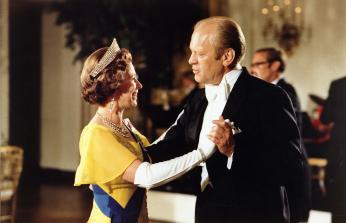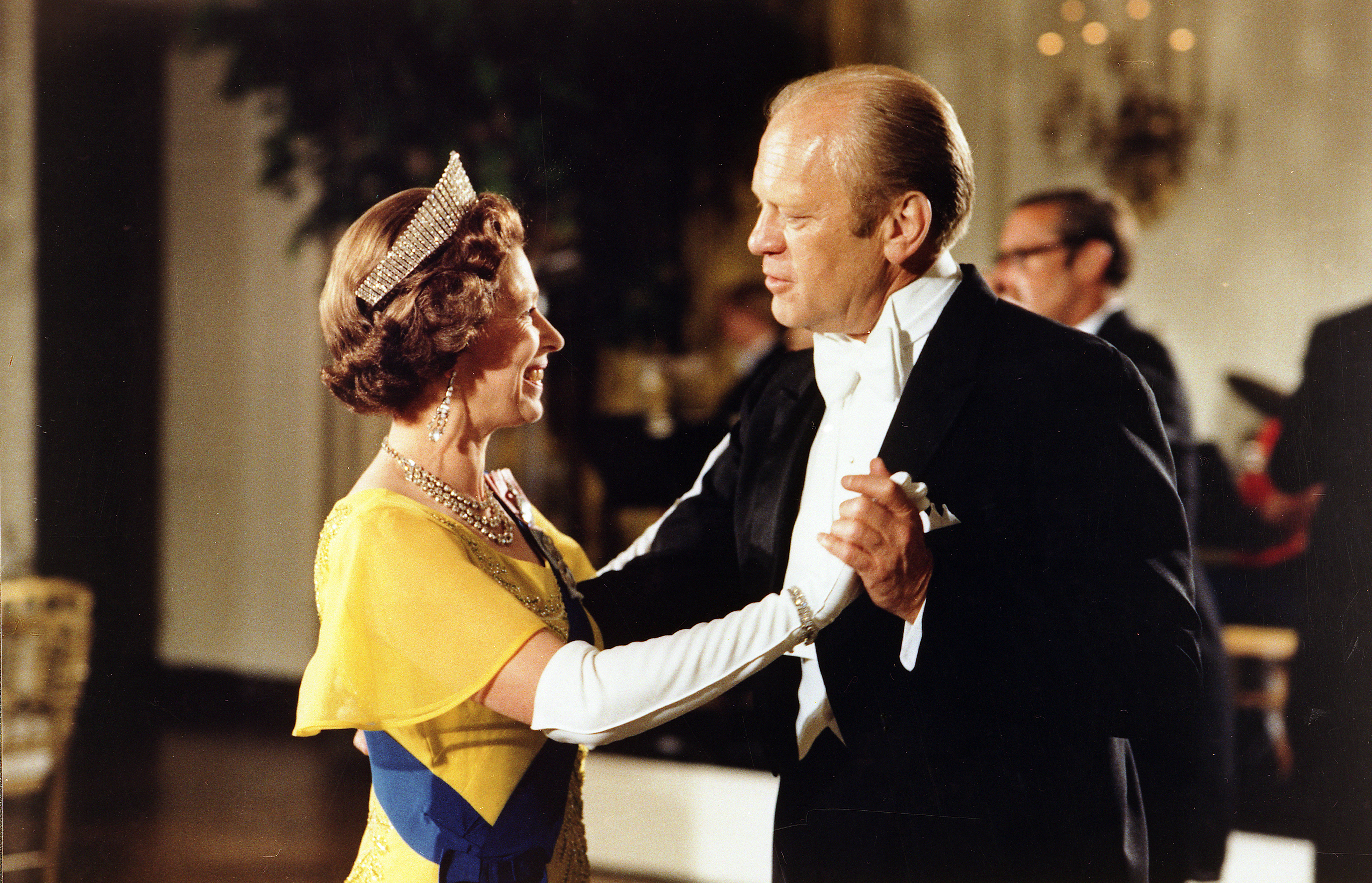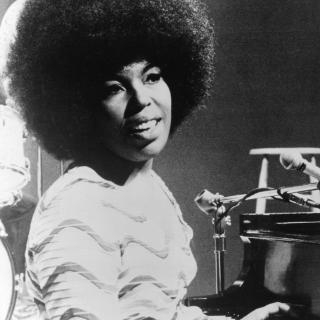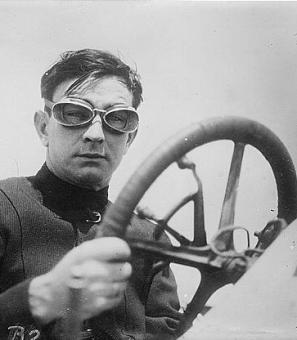Production Peril: Queen Elizabeth II’s 1976 State Visit
Broadcasting live events is always tricky, especially in the Nation’s capital.
The year was 1976: America was in the midst of celebrating its Bicentennial. Nationwide festivities uneasily meshed with protests and discussion about the value of such patriotism in the wake of such a tumultuous political decade, which had seen the 1973 Oil Crisis, the Watergate scandal, and the end of the Vietnam War.
Nevertheless, the Ford Administration saw the Bicentennial as an opportunity to reaffirm America’s present bonds with its former ruler. How better to demonstrate America’s independence than by greeting Britain as a fellow sovereign nation, but also a global superpower? The Ford Administration sent an invitation to Queen Elizabeth II for a state visit, which Her Majesty accepted. She arrived in Philadelphia on July 6, with plans to visit New York, Boston, and, of course, Washington D.C.
This was Queen Elizabeth’s second visit to Washington. The first came in 1957 as a celebration of the 350th anniversary of the founding of Jamestown. After gifting Philadelphia with a Bicentennial bell, the Queen arrived in Washington on July 7 for a White House banquet.
With all eyes on the Queen, a certain local public television station took on the ambitious task of broadcasting the state dinner live. The production was one of many in what the New York Times called “marathon coverage” of all things Bicentennial.[1] Investing $10,000, nine cameras, and over three hours of television time, Producer Martin Clancy called the program “logistically and technically the biggest live thing WETA has ever done.”[2] At the same time, he recognized its symbolic potential and vowed, “I ain’t going off the air until I get a picture of the Queen of England dancing with the President of the United States.”[3]
Director Jim Silman said, perhaps ironically, that the broadcast would be a “relief from this political year.” He also saw the visit as coming “full circle: a descendant of George III visiting us now that we are allies and friends. I think it will be a gas and a half.”[4]
Unfortunately for producers and viewers alike, the broadcast encountered several hitches. While skies were clear for the Queen’s afternoon reception, rain soon descended and ruined four of WETA’s nine cameras.[5] There would be neither headline-worthy shot of the Queen and the President on the balcony nor red carpet interviews of the 224 VIP guests as they shuffled into the outdoor tent.
The producers also encountered trouble with microphones, faulty earpieces, and a cable line that cut video broadcasts for four minutes. Host Robert MacNeil scrambled to maintain professionalism in program pandemonium. After all, this was the President of the United States and the Queen of England!
White House regulations prohibited cameras from moving, leading to obstructed or grainy views.
Even when camera operators got a good shot, the program itself left much to be desired. Bob Hope’s monologue was apparently “surpassed in dreariness only by the remarks of Ford and the Queen (described by MacNeil as “not likely to set the White House afire again).”[6] While Ford’s speech was certainly dull, fans of Her Majesty will recognize her famous wit as she quipped, “After all, nobody can say that what happened on the 4th of July, 1776, wasn’t very much a bilateral affair between us.”
Other redeeming moments of the evening included a pre-taped segment of Julia Child in the White House kitchen, interviewing Chef Henry Heller on the menu. What dishes were fit for a queen? Apparently lobster medallions, vegetable salad, stuffed roast of veal, deep-fried rice croquettes, and peach ice cream for dessert, all paired with wines from California’s Napa Valley.[7] Child voted the ice cream as “most American.”
So, did Martin Clancy get his winning shot of President Ford dancing with the Queen? Yes and no. When the cameras finally locked in on the dancing duo, the band was reportedly playing The Lady is a Tramp.
Despite its many production challenges, the program was the most popular of the evening. As Pulitzer Prize-winning TV critic Tom Shales succinctly wrote of the spectacle, “because a thing can be done does not necessarily mean it should be.”[8]
Since 1976, the Queen has visited Washington three more times: in 1983, 1991, and 2007. While the speeches of all three subsequent visits were televised, 2007 undoubtedly had the most gaffes, such as when President George W. Bush accidentally implied that the Queen was 230 years old.[9]
While the 1976 state dinner may have not been a particularly flashy moment in history, or a traditionally televised affair, such historical footage reminds us how much Washington, D.C. has grown – and how its snooze-worthy speeches remain the same.
Footnotes
- ^ Joan O'Connor, "TV VIEW: Force-Feeding Home Viewers With Non-Stop Coverage" The New York Times, 18 July 1976.
- ^ Tom Shales, “Royal Coverage,” The Washington Post, 05 July 1976.
- ^ Ibid.
- ^ “A gas” was slang in the 1960s for a lot of fun.
- ^ Paul Harris, “Radio-Television: White House Gala for Queen a PBS Rater of Mixed Quality,” Variety, 14 July 1976.
- ^ Ibid.
- ^ William Rice, “Sharing a Cook’s Secrets,” The Washington Post, 07 July 1976.
- ^ Tom Shales, “Quaint Spectacle of a State Dinner,” The Washington Post, 08 July 1976.
- ^ Jennifer Loven, “Dinner for the Queen Has British Touches,” The Washington Post, 08 May 2007.






![Sketch of the mythical fuan by Pearson Scott Foresman. [Source: Wikipedia]](/sites/default/files/styles/crop_320x320/public/2023-10/Goatman_Wikipedia_Faun_2_%28PSF%29.png?h=64a074ff&itok=C9Qh-PE1)












